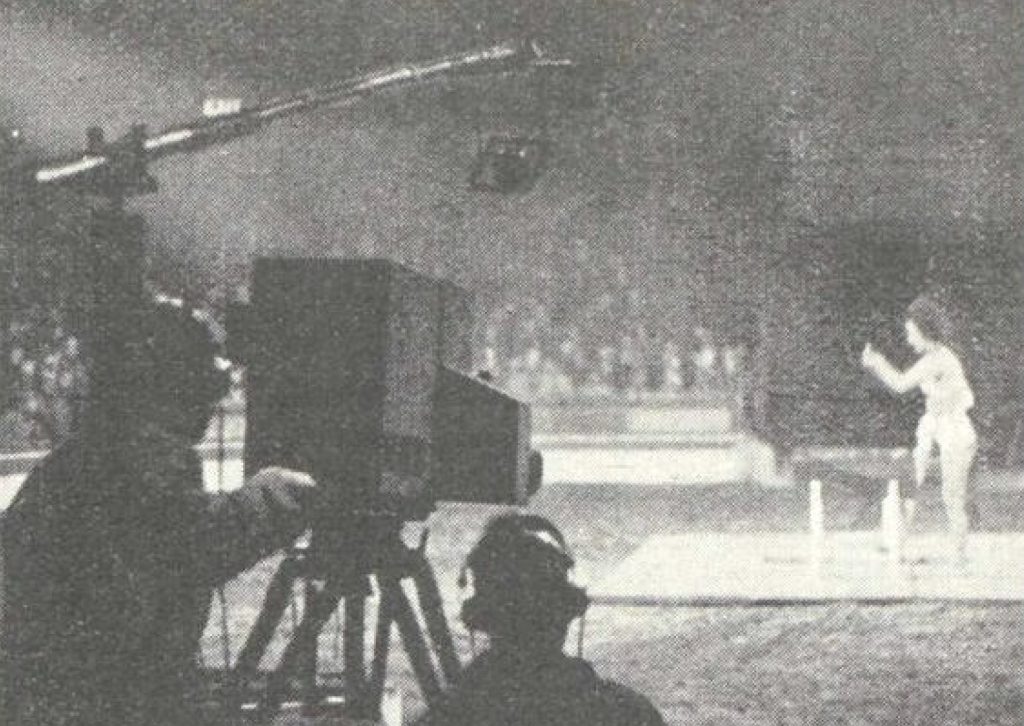OTD in early British television: 4 January 1938

John Wyver writes: the afternoon of Tuesday 4 January 1938 saw the first outside broadcast visit to Bertram Mills’s Circus at Olympia (above), from where broadcasts would be shown across the next five days. This first transmission featured the opening parade, with the Karpi Troupe of Acrobats, jugglers The D’Angolys, bareback riders The Kayes, and The Chinese Lucky Girls, ‘child contortionists’. Commentators Freddie Grisewood and June Myles also interviewed Mr Kelly the Clown and Bertram Mills himself. Different elements of the spectacular were featured through the rest of the week.
OBs to date had mostly been of outdoor events: first, the Coronation Parade in May 1937, then Wimbledon, the Lord Mayor’s Show and the Cenotaph. As the reviewer, probably Peter Purbeck, for The Listener wrote:
The Circus from Olympia was not merely a good show in itself, it was exciting because it was the first ‘interior’ outside broadcast which Alexandra Palace has so far attempted, with the exception of two local boxing outside broadcasts made some time ago from the Concert Hall at Alexandra Palace.
Most viewers, whether they saw it for themselves or not, will have heard by now that the Circus was technically a success, and it needs no great imagination to realise the new fields it opens up. Jf the. emitron camera can show us satisfactorily what is happening inside the Circus tent at Olympia, there is no reason why it should not, in due time, take us inside the theatre, the concert hall, and the political meeting hall.
Indeed. Not that everything went smoothly, especially with the new ‘Super’ Emitron camera which had a greater light sensitivity.
At the first rehearsal for the Circus broadcasts the camera was mounted on a ‘dolly’ which was placed inside the ring for the opening parade, then tracked up and down the exit tunnel for the show. Unfortunately the horses and elephants, not realising that it was there expressly to do them honour, took a marked dislike to the strange new object and so, for the safety of all concerned, the camera was removed from the ‘dolly’ and placed in a box.
As for the broadcasts themselves:
Almost all the reviews of it which have appeared in the daily Press agreed that it was a success… Partly perhaps the success was due to the sense of space and depth within the tent, a pleasant contrast after the comparatively cramped quarters of the studio to which we are accustomed; and partly it was due to the general noise and bustle going on in the background and which the microphones so effectively picked up…
A word must be said about the commentary because that too was an attempt to give us something new. Jnstead of merely telling us the names of the performers and describing what was going on (which after all we could see perfectly well) Mr. Grisewood had with him a young lady of sixteen, Miss June Myles, whom he had adopted for the occasion as his ‘television niece’, and they contented themselves with making the ordinary remarks which niece and uncle would be likely to make at the Circus.
And so here begins, 87 years ago today, the long-running tradition of a Christmas circus visit by television. And note that the rather blurry image, reproduced from The Listener, shows ‘Koringa’, billed as ‘the world’s only female Fakir’, who was also featured by television in a number of solo spots from Alexandra Palace; do follow the link to some fascinating paragraphs about her from the archives at the University of Sheffield.
Leave a Reply